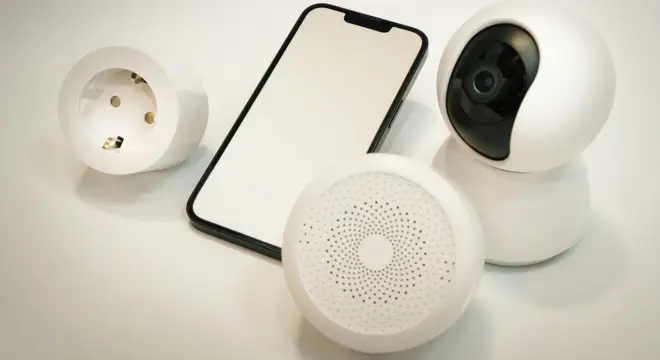Home Security Fail: Teen Uses Mom’s Gun in Officer Shooting
A recent shooting incident in California has reignited serious concerns over gun safety in the home. A teenage boy, now facing charges, allegedly shot a California City police officer using firearms he accessed inside his mother’s residence.
The case has not only raised questions about youth violence but has also highlighted the often-overlooked issue of home gun storage and its consequences. As more households own firearms for protection, this incident reminds us that inadequate home security can have tragic outcomes.
The Incident: A Case That Raised Serious Concerns
According to prosecutors, the teen involved in the California City officer shooting had direct access to multiple firearms within his home. The weapons, reportedly belonging to his mother, were not securely stored—making it alarmingly easy for a minor to use them in a violent confrontation with law enforcement.
As reported by KGET News, the shooting occurred during an attempted police interaction with the teen, which turned dangerous when the suspect used one of the accessible weapons from inside the house. The officer sustained injuries, and the teen now faces serious charges.
This isn’t just a crime story—it’s a breakdown in home security protocol.
Where the Home Security Failed

The most critical lapse in this case was the failure to secure firearms within the household. Authorities suggest the weapons were neither locked away in safes nor equipped with trigger locks. No biometric or digital safety systems were in place to prevent unauthorized access—despite minors living in the home.
Many parents assume hiding guns is sufficient, but teenagers are resourceful and curious. If weapons are not locked, they are accessible. If they are accessible, they are dangerous. In homes with firearms, security must go beyond ownership—it must include responsible storage.
Why This Is More Than Just One Case
While the California City shooting is deeply troubling, it isn’t an isolated incident. Across the United States, similar cases continue to emerge where minors commit violent acts using firearms that were kept unsecured at home. Studies have shown that in a significant number of school shootings and accidental gun deaths involving children, the weapon came from the child’s own household.
The pattern is clear: lack of proper gun storage creates a direct pathway to tragedy. What makes it worse is the common misconception among parents that simply hiding a firearm or storing it in a drawer is enough. In reality, such minimal efforts do little to prevent determined teens from gaining access.
This case highlights an urgent public safety message—unsafe firearm storage is not just a personal risk, it’s a community risk. Without action, the cycle of access and violence will continue.
Worried that your current setup might fail during a real break-in? This California home invasion case reveals the weak points most people overlook.
Legal Accountability: Are Parents Aware?
There’s also a growing legal dimension to these cases. In many states, parents or guardians can face criminal charges if their failure to secure firearms results in injury or death. But enforcement of such laws is inconsistent, and in several jurisdictions, no clear legal requirement exists for how firearms should be stored within the home.
In the California City case, prosecutors are now examining the role of the teen’s mother—not just as a parent, but as the legal firearm owner. If the weapons were left unsecured, she could face charges related to negligence or endangerment, depending on local gun storage laws.
Yet beyond legal consequences lies a larger issue: many parents simply don’t know the rules, or underestimate their responsibility. With rising rates of gun ownership in American homes, it’s critical that families understand that owning a firearm isn’t just a right—it’s a responsibility that starts with secure storage and clear boundaries.
What Can Be Improved at Home?

The California City incident clearly shows how unsecured firearms inside a home can lead to real-world danger. To avoid similar tragedies, families must take strong, proactive measures to improve home safety:
1. Use Fireproof, Tamper-Proof Gun Safes:
- Invest in a biometric or digital keypad safe for firearms.
- Choose safes that are bolted to the floor or wall—harder to move or break into.
- Regularly test the locking mechanism for functionality.
2. Apply Trigger Locks on All Firearms:
- Trigger locks prevent a weapon from being fired, even if accessed.
- Easy to use, affordable, and highly effective for layered security.
- Ideal for households that can’t yet afford large gun safes.
3. Store Ammunition Separately:
- Keep bullets and magazines in a completely different locked location.
- This extra step adds valuable time and friction, especially for unauthorized users.
- Ensure children and teens are unaware of where the ammo is stored.
4. Use Smart Home Security Integration:
- Add motion sensors or smart cameras to gun storage areas.
- Get real-time alerts on your phone if someone tampers with a safe or enters a restricted room.
- Connect smart security to your main home automation system for full control.
5. Schedule Routine Firearm Safety Checks:
- Every 30–60 days, do a full audit:
- Test locks
- Change access codes
- Ensure ammo is secured
- Don’t wait for a near-miss to review your setup.
6. Have Open, Honest Conversations with Children:
- Educate your kids about firearms in a serious, age-appropriate way.
- Avoid turning guns into a “forbidden mystery.”
- Explain clearly: what a gun is, what it can do, and why it must never be touched.
7. Set Non-Negotiable Household Rules:
- No access without adult supervision—under any circumstances.
- Set consequences for breaking safety rules.
- Reinforce the rules frequently, not just once.
Final Thoughts
As this tragic case out of California City reminds us, it doesn’t take malicious intent for things to go terribly wrong—it only takes access. In homes with firearms, especially those with teens or younger children, security can’t be an afterthought.
Gun ownership brings responsibility. That responsibility includes not just proper storage, but active awareness, smart planning, and communication with every member of the household. From biometric safes to basic trigger locks, and from legal understanding to proactive parenting—every layer of defense matters.
Ultimately, stronger home security doesn’t just protect you—it protects everyone around you.
If you keep firearms in the house, take action today—review your storage methods, upgrade your security systems, and talk to your family about safety. For more real-life stories and expert guidance on making your home safer, visit our website.
Disclaimer: This article is intended for informational purposes only. BuildLikeNew.com does not offer legal or law enforcement advice. Please consult your local authorities or legal counsel regarding firearm laws and home security regulations in your area. Safety practices and storage requirements may vary by state.


